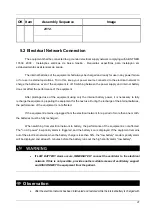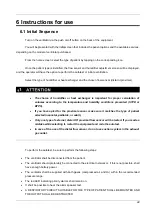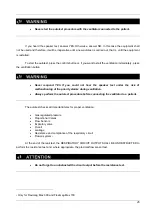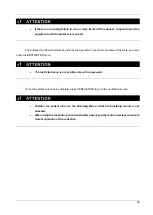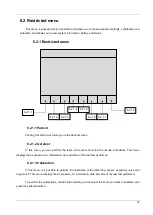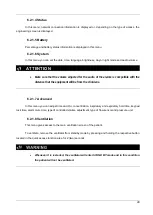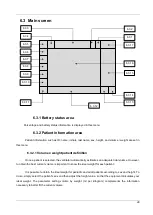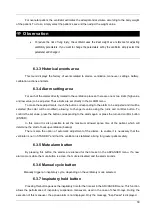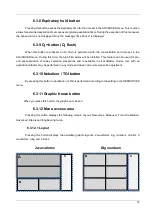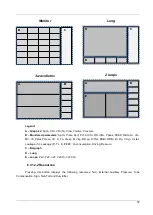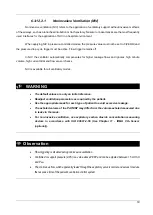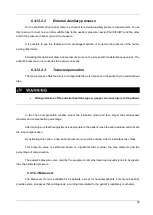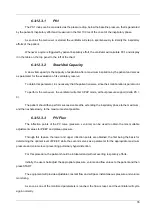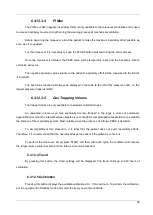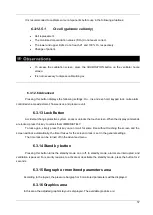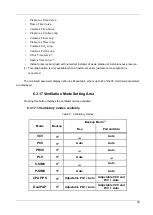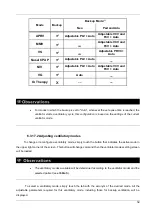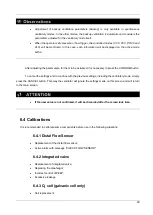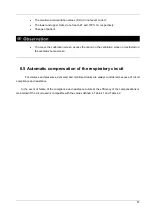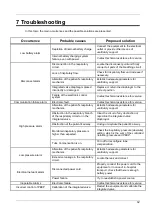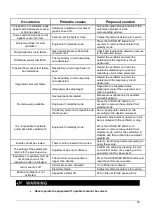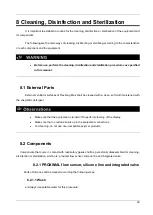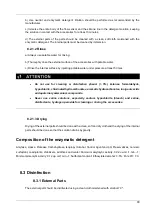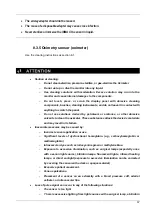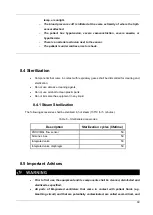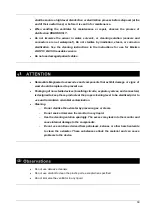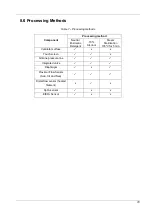
55
6.3.12.3.1
P0.1
The P0.1 index can be considered as the pressure drop, below the baseline pressure, that is generated
by the patient's inspiratory effort and measured in the first 100 ms of the onset of the inspiratory phase.
As soon as the maneuver is started, the ventilator will step in spontaneously to identify the inspiratory
efforts of the patient.
Whenever a cycle is triggered by patient inspiratory effort, the ventilator will calculate P0.1 and display
it in the table on the top panel to the left of the chart.
6.3.12.3.2
Slow Vital Capacity
A slow vital capacity is the capacity of expiration after a maximum inspiration by the patient and serves
as parameter for the evaluation of its ventilatory reserve.
To obtain this parameter, it is necessary that the patient is aware, since their collaboration is paramount.
To perform the maneuver, the ventilator will enter CPAP mode, without pressure support (delta PS =
0).
The patient should then perform successive breaths, extending the inspiratory phase to the maximum,
and then exhale slowly, to the maximum extent possible.
6.3.12.3.3
P/V Flex
The inflection points of the PV curve (pressure x volume) can be used to obtain the most suitable
adjustment values for PEEP and plateau pressure.
Through this feature, the lower and upper inflection points are obtained, the first being the basis for
determining the optimal level of PEEP, while the second serves as a parameter for the appropriate maximum
pressure and volume level, preventing pulmonary hyperdistention.
For this procedure, the patient should be intubated and without exerting respiratory efforts.
Initially, the user shall adjust the appropriate pressure, volume and flow values to the patient and then
press START.
The equipment will provide adjustable constant flow and will pass instantaneous pressure and volume
monitoring.
As soon as one of the monitored parameters is reached, the flow is reset, and the ventilator will cycle
again normally.

